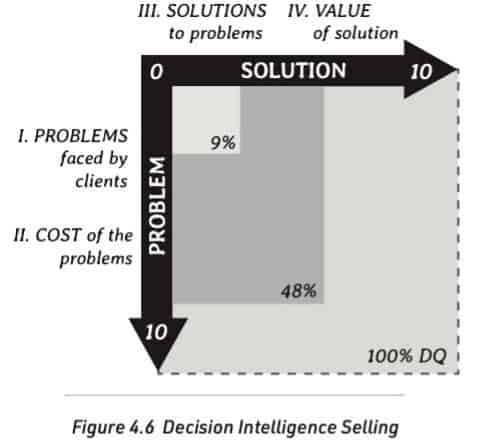Doing Good By Selling Well: How Social Enterprises Can Transform Their Sales Strategies by Boosting Customers’ ‘Decision Intelligence’
“I’ve got twenty-three field agents going farm-to-farm selling seeds and irrigation equipment, but it’s not working well enough. … We’ve put a lot of effort into the human-centered design process, listening carefully to our customers. We’ve developed a bundle of farm inputs that will boost production by fifty percent. We’ve got a simple drip irrigation system to bring water to the fields. The products pay for themselves in less than six months. But the farmers just aren’t buying. We’re missing something—I just don’t know what it is.”
These words, from Mike Roberts, formerly the Country Director for iDE Cambodia, begin our new book, “Sell Well, Do Good.” If you are involved with a social enterprise—as a business leader, funder or accelerator—this story may be painfully familiar. You can have a brilliant product, local production and an affordable price point. You may even have experienced initial success. But to create the impact and fulfill the mission of your organization, sooner or later you’ve got to learn how to sell that product in a way that’s effective and that aligns with your company’s ethics and principles. Or you’re headed for trouble.
Lizz Ellis, CEO of iDE Global, summarized this plainly in our book: “If you have goods, services and products that are meant to create social impact, you won’t be able to have that impact unless you have a solid sales strategy that you can execute on.” John Stone, Founder and Chairman of the Stone Family Foundation, didn’t mince words either: “You’ve got to become profitable enough to be stable and self-sustaining, or you’ll forever be dependent on annual renewals of your funding, and you’ll fail in your social mission. The key to successful social entrepreneurship is selling.”
But what is the key to successful selling? That’s a harder question for many social entrepreneurs to answer. Kevin Starr, who leads the Mulago Foundation, summed up the old approach succinctly the moment we met him: “Everybody thinks that selling is about hustling stuff.” We’ve found his statement to be true throughout the world. And this approach drives sellers and customers crazy.
Sellers talk more than they listen and stretch the truth in order to pressure other human beings to buy from them. Sales managers use both carrots and sticks to get salespeople to apply this pressure. And in response to this behavior, customers withhold information, resist committing and deepen their distrust. Nobody enjoys the process, bad behavior expands and businesses find that the way they are selling compromises their mission.
The good news is that you can change the way you sell. The challenging news is that you need to do more than simply improve the way you sell – you must transform it. Transformation requires changing both context (what you think selling actually is) and content (how you go about it).
Since 2009, our consultancy, Whitten & Roy Partnership, has been assisting social enterprises in developing systems and practices that update the old, pressure-filled approach to sales that has defined businesses for centuries. We’ve conducted over 350 projects in 44 countries for companies both large and small – including those with both business-to-business and business-to-customer distribution channels. We’ve worked with companies engaged in both transactional (i.e., one or two sales conversations, often involving a single product) and complex (i.e., multiple sales conversations and decision makers) selling – in the Western world and emerging markets. Below, we’ll share some of the insights we’ve learned from our decades of sales experience, exploring an ethical sales approach that’s a better fit for socially minded organizations focused on the well-being of their own salespeople and the clients they serve.
Decision Intelligence – a transformative context
To transform your enterprise’s approach to selling, start by observing the way salespeople and sales leaders act in your organization. Look for “hustling” behaviors. Uncover management behaviors that encourage and promote “convincing customers to buy.” This will be a revelation. For instance, our clients nearly always find that, under pressure, salespeople and their managers stretch the truth, create anxiety and fear in customers, and behave in ways that compromise the integrity and good will of the company’s brand. And occasionally they find some people doing a great job who can serve as models for everyone else.
Next, choose an approach to selling that promotes well-being for everyone involved – an approach that views selling as the helpful art of supporting customers in making their best buying decision, even if that decision is “No.” We call this “DQ Selling.” IQ and EQ (referring to intellectual and emotional intelligence) are well-known concepts. We coined the term DQ to refer to the “decision intelligence” of customers.
DQ Selling – how to begin
To develop a high DQ, customers need to understand four things, and they need to understand them in this order:
- First, they must grasp the full extent and cause of the problems they are trying to solve—their needs, issues and difficulties;
- Second, they must identify what it is costing them to leave these problems unsolved;
- Third, they must understand how the proposed solution will actually solve these problems;
- And fourth, they must recognize the value this solution will bring them.
When a customer has a 100% understanding of the problem she is trying to solve, and a 100% understanding of the solution to this problem, she then has a DQ of 100%, and she can make the best possible buying decision.
Our clients tell us that none of their customers possess 100% DQ at the start of the selling/buying process. In fact, they are not even close. When we ask them to graph their customers’ DQ – not the decision intelligence customers think they have, but what they actually possess – our clients report some insightful results.
Their well-informed customers have on average a 70% understanding of the problem and a 50% understanding of the solution. On the other hand, their poorly informed customers are closer to a 20% and 10% understanding, respectively. This means that even their best-informed customers come to the first conversation with an overall DQ of only 48%. The rest of their customers have a lower DQ, sometimes as little as 9%.

Applying DQ selling at your organization
To apply this approach of selling to your unique organization and situation, start by asking three questions:
- What are our salespeople actually doing and saying as they sell? Get your sales leaders into the field to find out.
- How do our activities, practices, systems or meetings contribute to raising the DQ of our customers? Everyone in your organization needs to answer this question.
- What training do our salespeople and their managers need to implement DQ selling? Figure this out and require it.
Applying these basic steps is not a quick or simple process. But it is thorough and thoughtful – and it works.
It took Mike Roberts several months to introduce this strategy to Lors Thmey, the Cambodian agriculture company that was struggling to sell its drip irrigation system, which he led as iDE’s Country Director. But once this new approach had been implemented, the company’s average monthly sales doubled. After two years, sales doubled again, raising farmer income by 56%. This success brought international recognition when, in 2010, Lors Thmey/iDE received the inaugural Nestlé Creating Shared Value Prize.
Along with the Bill & Melinda Gates Foundation and the World Bank, the Stone Family Foundation helped fund Roberts’ next project: addressing Cambodia’s sanitation situation. He enrolled Cordell Jacks and Tamara Baker who, utilizing the DQ selling approach, developed iDE Cambodia’s Easy Latrine program to improve sales of its latrine solution among rural households. John Stone noted that this program has been responsible for raising the percentage of latrine coverage in seven of 26 rural Cambodian provinces from 22% to over 75%. Latrine sales have exceeded 340,000, and this has helped hundreds of villages reach open defecation-free status.
As these examples illustrate, there is a huge payoff to transforming the way social enterprises sell. You wind up with businesses that are profitable and self-sustaining, that employees are proud to work for, and that customers enjoy dealing with. And you fulfill the mission with which you began the enterprise in the first place.
Sell Well, Do Good by W. Roy Whitten, PhD, and Scott A. Roy is available to order through Amazon. It is the first book on sales that is fully dedicated to social enterprises and funders operating in emerging markets. More information about the book is also available here: https://www.wrpartnership.com/sell-well-do-good
Roy Whitten is the co-founder of international sales consultancy Whitten & Roy Partnership.
Photo courtesy of Pixabay.
- Categories
- Social Enterprise



